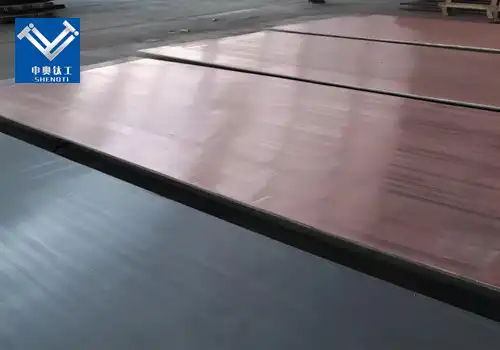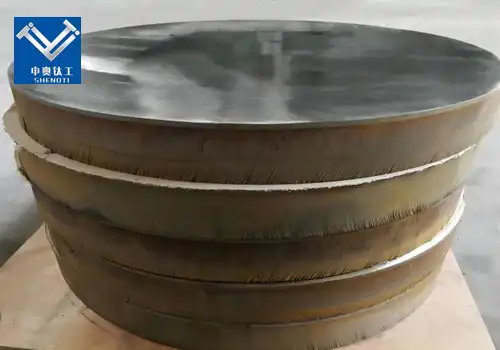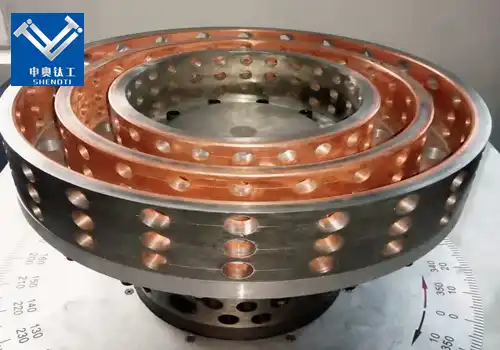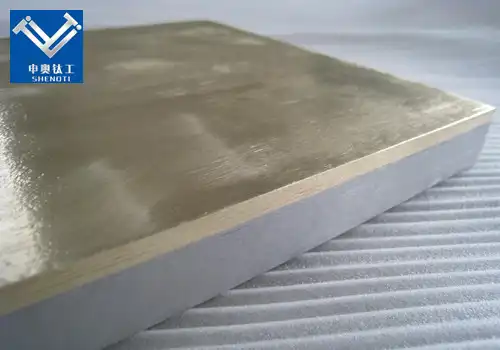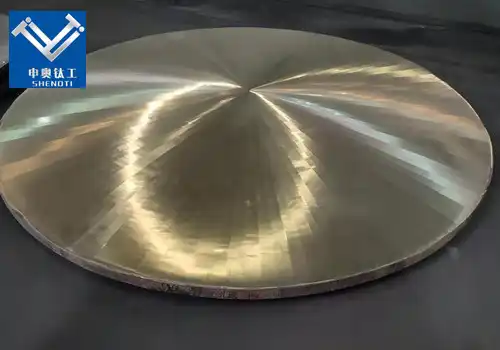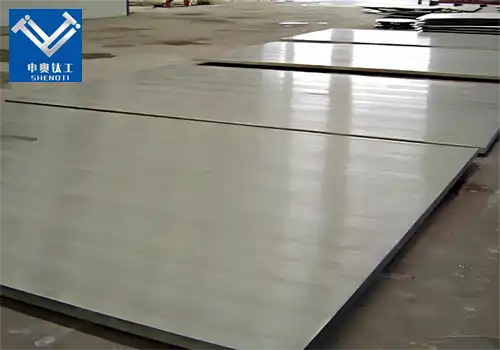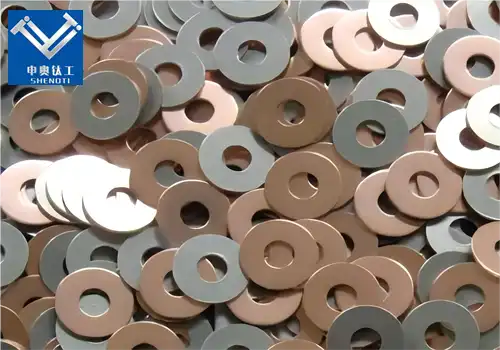
Copper Metal Clad Plate: High Performance in Modern Industry
2025-07-02 16:28:41
Copper Metal Clad Plate: High Performance in Modern Industry
Explore how copper metal clad plates combine conductivity, strength, and cost-efficiency. Learn about manufacturing, applications, and performance in power, electronics, and new energy sectors.
What Is a Copper Metal Clad Plate?
A copper metal clad plate is a high-performance, bi-metallic composite material formed by bonding copper with another metal—most commonly aluminum, stainless steel, or carbon steel. This composite solution takes full advantage of copper’s superior electrical and thermal conductivity while reducing weight and cost through the use of a secondary metal substrate.
In industries that demand excellent conductivity, corrosion resistance, and mechanical strength, the copper metal clad plate offers an optimized solution. It is widely used in electrical systems, heat exchangers, and new energy technologies.
H2: How Copper Metal Clad Plates Are Made
H3: Bonding Techniques
The manufacturing process of copper metal clad plates involves advanced bonding methods such as:
Explosion Welding: High-energy impact creates a metallurgical bond without melting the base materials.
Hot Rolling Bonding: Heat and pressure are applied to forge a strong interface.
Solid-Liquid Diffusion: A controlled temperature environment enables atoms of copper and the substrate metal to diffuse and form a stable bond.
These techniques ensure structural integrity, thermal stability, and long-term durability.
H3: Material Combinations
Typical copper metal clad combinations include:
Copper + Aluminum: For lightweight and high conductivity
Copper + Stainless Steel: For corrosion resistance and structural applications
Copper + Carbon Steel: For pressure vessels and pipelines
Each pairing serves different industries and performance needs, making the copper metal clad plate highly versatile.
H2: Key Features of Copper Metal Clad Plate
H3: High Conductivity
Copper is an excellent conductor of electricity and heat. By integrating it with structural metals, the copper metal clad plate ensures consistent energy transfer and heat dissipation, especially in power and thermal management systems.
H3: Cost Reduction
Using a clad plate instead of a full copper plate significantly reduces raw material costs. The use of aluminum or steel substrates provides economic advantages without compromising performance.
H3: Mechanical Strength and Corrosion Resistance
Depending on the secondary metal, the clad plate exhibits excellent strength-to-weight ratios and resistance to harsh environments, including marine and industrial atmospheres.
H3: Excellent Workability
Copper metal clad plates can be cut, bent, stamped, or welded using conventional tools. Their flexibility in manufacturing makes them ideal for custom fabrication in a wide range of industries.
H2: Applications of Copper Metal Clad Plate in Industry
H3: Power and Electrical Systems
Copper-clad aluminum or copper-clad steel is widely used in:
Busbars and switchgear components
Electrical connectors and terminals
Power transmission and distribution lines
These applications benefit from enhanced conductivity and reduced material mass.
H3: Heat Exchangers and HVAC
Copper metal clad plates are ideal for thermal transfer applications such as:
Radiators
Condensers
Heat sinks and chillers
The copper layer ensures effective thermal exchange, while the aluminum or steel base supports structural integrity.
H3: Automotive and New Energy Vehicles
In electric and hybrid vehicles, copper metal clad plates are used for:
Battery tabs and modules
Thermal control systems
Lightweight electrical bus systems
Their dual-metal composition contributes to energy efficiency and weight reduction.
H3: Renewable Energy Systems
Solar panels, wind turbines, and energy storage systems increasingly rely on copper metal clad materials for:
Solar busbars
Grounding strips
Electrical interconnects
These systems require materials that balance conductivity, corrosion resistance, and long-term reliability.
H3: Aerospace and Rail Transit
In aerospace and rail, every gram matters. Copper metal clad plates enable:
EMI shielding
Thermal protection
Lightweight structural supports
Copper Metal Clad Plate vs. Solid Copper and Other Alternatives
|
Feature |
Solid Copper |
Copper Metal Clad Plate |
Pure Steel/Aluminum |
|
Electrical Conductivity |
Excellent |
Excellent |
Low |
|
Weight |
Heavy |
Lighter |
Light |
|
Cost |
High |
Medium |
Low |
|
Strength |
Medium |
High |
High |
|
Corrosion Resistance |
Good |
Excellent |
Varies |
|
Solderability |
High |
Good |
Low |
The copper metal clad plate provides a practical compromise—maintaining most of copper’s strengths while overcoming its weight and cost limitations.
H2: Common Grades and Technical Specifications
H3: Copper Grades
T2 (C11000)
TU1, TU2
Oxygen-free copper (OF-Cu)
H3: Substrate Grades
Aluminum: 1050, 1060, 3003, 5052
Stainless Steel: 304, 316L
Carbon Steel: Q235, Q345R
H3: Thickness and Tolerance
Total Thickness: 1 mm – 20 mm
Copper layer: 0.1 mm – 3 mm
Width: up to 2000 mm
Bonding Strength: ≥ 12 MPa
Custom sizes, shapes, and finishes are available upon request.
H2: Frequently Asked Questions (FAQs)
H3: How is the bond between copper and the base metal tested?
Testing includes ultrasonic inspections, peel tests, shear strength testing, and metallographic analysis to ensure consistent quality.
H3: What’s the typical service life of a copper metal clad plate?
Depending on the application, proper installation, and environment, service life can exceed 20 years, especially with anti-corrosion treatments.
H3: Can copper metal clad plates be used in welding applications?
Yes. Most copper-clad plates can be spot welded, friction welded, or brazed with the correct parameters and filler materials.
H3: Is copper-aluminum galvanic corrosion an issue?
With modern production techniques and proper surface treatments, galvanic corrosion is minimized. Additional coatings or insulators can be applied when needed.
H2: Why Choose Our Copper Metal Clad Plates?
As an experienced manufacturer in bimetallic composites, we provide:
Advanced production lines for explosion welding and rolling
Precision control over layer thickness and bonding strength
Custom engineering based on your product drawings
Competitive pricing with fast international delivery
All products conform to ISO9001, ASTM, and other relevant international standards.
H2: Get in Touch for Copper Metal Clad Plate Solutions
Are you sourcing high-performance copper metal clad plates for your next project?
We offer:
✅ Free technical consultation
✅ Custom sizes and materials
✅ Global logistics support
📩 Contact us today to request samples, technical data sheets, or a quotation.
Email: zh@baojiti.com.cn
Website: www.shenaocladplate.com
YOU MAY LIKE











